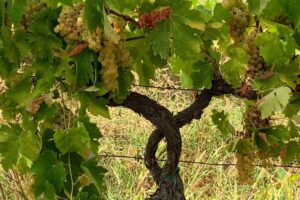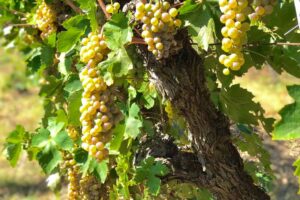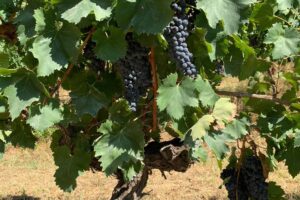
Viticulture and Winemaking in the Amerino area
The Amerino territory is a land of great rural traditions, which tell us about a deep bond between man and nature.
Vine cultivation in Umbria dates back to ancient times, and the Amerino area is no exception: Virgil himself, in the first book of the Georgics (ca. 265 A.D.), describes the mastery of the Amerino’s inhabitants in the cultivation of the vine “Atque amerina parant lentae retinacela viti” testifying to the importance of this area for wine production.
Even the naturalist doctor Andrea Bacci, in his “De naturali vinorum historia”, mentions the wines of Amelia, while the town’s statutes already contained provisions for the retail sale of wine and the use of a precise and specific system of weights and measures for its marketing.
The Amerino wine production is part of a territorial context marked by landscape and natural elements that are still intact, where vine cultivation outlines and often delimits the irregular physiognomy of the Umbrian hills.
The rural landscape is characterised by the presence of olive groves and vineyards, symbols of an excellent food and wine tradition and genuine flavours.
 The typically continental climate, with cold winters and hot, but dry and windy summers, the moderate rainfall well distributed throughout the year and the prevalent hilly configuration favouring good exposure, give this territory the ideal conditions for viticulture. The morphological properties of its soils are often associated with a capillary and generous natural hydrographic network, that guarantees the right amount of moisture to them. The structure of the soils is mainly clayey, with widespread calcareous formations, and it is naturally suitable for wine production. The presence of a volcanic substratum with tufaceous formations and grey marls lends an important contribution of flavour to the wines. The vineyards are located at altitudes varying from 200 to 400 m a.s.l.
The typically continental climate, with cold winters and hot, but dry and windy summers, the moderate rainfall well distributed throughout the year and the prevalent hilly configuration favouring good exposure, give this territory the ideal conditions for viticulture. The morphological properties of its soils are often associated with a capillary and generous natural hydrographic network, that guarantees the right amount of moisture to them. The structure of the soils is mainly clayey, with widespread calcareous formations, and it is naturally suitable for wine production. The presence of a volcanic substratum with tufaceous formations and grey marls lends an important contribution of flavour to the wines. The vineyards are located at altitudes varying from 200 to 400 m a.s.l.
If we wanted to list and briefly describe the native grape varieties that characterize the “Amelia” Denomination, we would find Grechetto, Malvasia, Verdello among the white grapes, while the ubiquitous Sangiovese, Ciliegiolo, Montepulciano, Aleatico among the red grapes, while among the international varieties, notably Chardonnay and Merlot.

Grechetto, the region’s most expressive white grape variety and now considered native, thanks to which interesting white wines are produced, is used both on its own and in blends with international grapes. Grechetto generally produces wines with good structure, discreet elegance and alcohol content.
White Malvasia finds an ideal habitat in this area, where it is commonly used to make wine as a single variety. Wines made from white Malvasia have good freshness and a delicate aroma defined by fruity notes and a perceptible aromatic intensity.
Verdello is quite a productive variety, and it is used in the composition of many Umbrian denominations, where it is blended with other grapes such as Trebbiano Toscano and Grechetto, which contribute to intensify its aroma and its freshness, along with a slightly almondy finish.
Sangiovese is the most widespread black grape in central Italy and it is also used in the composition of almost all the denomination wines of the region, produced on its own or in blends with local and international varieties, such as Merlot and Cabernet Sauvignon. Its great versatility and taste-olfactory expression make it difficult to outline specific common identity characteristics of regional wine production. The resulting wines are thick, well-structured and acidic, with good tannins and elegant notes of ripe red fruit and clear aromas of leather and tobacco.

A rather widespread vine variety used in the Amerino area is Ciliegiolo, which is deeply linked to this area where it has always been grown, and expresses wines with distinctive organoleptic characteristics. We can say that it is also the fulcrum of the above-mentioned intense activity of research and experimentation. It produces a pure, medium-bodied wine, vinous and fruity, with a hint of marasca cherry, with little tannin and limited acidity. In recent years, it is finding increasing interest and gaining more and more recognition.
Another grape variety cultivated in the Amerino area with excellent results, is Montepulciano, which produces both pure and blended wines with intense colour, fruity and spicy aromas and great structure.
An equally interesting grape variety is Aleatico, vinified in its sweet version, which stands out for its strong aromaticity and its fragrant fruity and floral notes.


